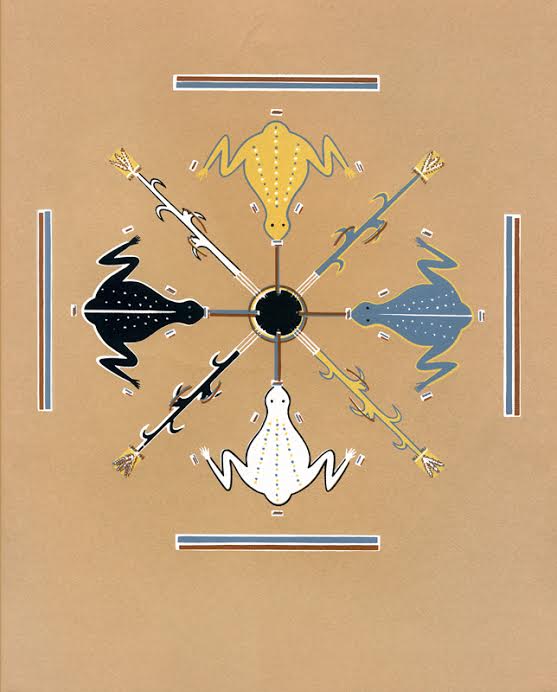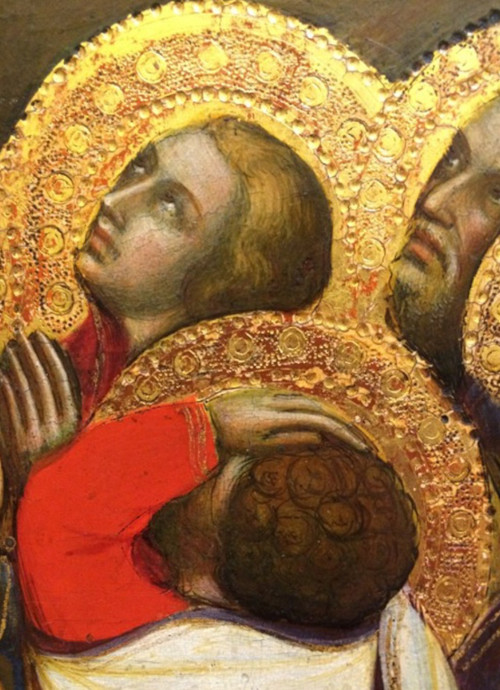ARAS Connections
Image and Archetype

Welcome
by Tom Singer
This edition of ARAS Connections provides us with some rather vivid contrasts between the new, the old, and the very old.
The New: Dance on the Waters of Creation is a contribution from Stacy Hassen, the curator of San Francisco ARAS. It features the work of a collaborative team of muralists, Marina Perez-Wong and Elaine Chu of Twin Walls Mural Company. The article presents not only the thrilling newness of the design and imagery of the mural but itself represents a new feature of the San Francisco Jung Journal that is now devoting a byline to the contributions of ARAS. And, equally thrilling is that the mural speaks directly to the emerging spirit of the new San Francisco Jung Institute building which is located in the richly diverse and thriving Mission District. This is in stark contrast to the older Institute building which was located in the stately Pacific Heights area of San Francisco. The location of the new building is a concrete and symbolic expression of the Institute's movement towards more actively embracing diversity and multiculturalism. The mural about which Stacy writes with such enthusiasm is expressive of the goal of the Institute to assume its role as part of the new world’s “dance on the waters of creation.”
The Old: We are pleased to present another fine film from the McKenzie Oaks film series hosted by the most generous supporter of ARAS, Jungian analyst Robin Jaqua. In contrast to the contemporary spirit of Dance on the Waters of Creation, The Wisdom of the Serpent: A Morning of Conversation with Dr. Joseph. Henderson and Dr. Thomas Kirsch is from a foundational era of our Jungian tradition. It reflects a different time and culture in the United States that will seem dated and perhaps even quaint to some. But, it gives us a glimpse of not only where we come from but of core Jungian ideas that actually remain as alive and potentially transformative today as they were decades ago. Although Joe Henderson had a formal way of presenting himself, this belied the fact that beneath his old world persona, he had an incredibly lively and open mind with a deep connection to the cultural and collective unconscious. Henderson’s knowledge of how the psyche structures and expresses itself carries the wisdom of the depths and is as relevant today as it was when this film was made. And Dr. Henderson’s sidekick in this film, Tom Kirsch, remains one of the most significant figures in the history of Analytical Psychology with his wonderful feeling function and extensive first hand knowledge of the Jungian world. Dr. Kirsch had the unique ability to relate to peoples from around the world in his role as President of the International Association of Analytical Psychology.
And finally, representing the very old, we have a special contribution from Joyce Hoffman, Ph.D. who has researched in depth “Halos in Medieval and Renaissance Italian Art”. In the process, Dr. Hoffman has uncovered the uniqueness of styles and nuanced meanings in different kinds of halos. This is a fine study of iconography. Dr. Hoffman writes: “It’s important to acknowledge that halos in the religious art of Medieval and Renaissance cultures are originally from the natural world of cosmic phenomena. They are, simply put, a member of our cosmic genetics. Humans have been maturing and learning steadily under the guidance of celestial bodies. The sun, stars, moon and planets have molded our environment as well as our art by being ingredients of our archetypal chemistry and memory.”
Dance on the Waters of Creation
by Stacy Hassen

This dance is the joy of existence.
Rumi (Coleman with Moynes 1995, 131)
Blending hyper-realistic and free-flowing painting styles, Elaine Chu and Marina Perez-Wong are complementary change-makers. After a synchronistic meeting in art school years ago, these two women felt an immediate kinship and forged an alliance and created Twin Walls Mural Company. Their focused efforts and balancing perspectives seamlessly intermingle to create a distilled unitive, collaborative process, working with pigments in paint to dissolve separation and inequality based on pigments in skin and discordant views of gender. Mainly mural-makers for outdoor spaces, their recent installation (from October 3, 2020–October 23, 2022) inside the San Francisco Museum of Modern Art (SFMOMA) was created as part of the museum’s Bay Area Walls commission. Our Ancestors’ Wildest Dreams features vibrancy and vision for life beyond borders, generational trauma, and division. Working with symbols and vibration, rhythm and emotion, the mural’s visual narrative conveys physical, psychological, and spiritual healing.
Read Dance on the Waters of Creation in its entirety here.
The Wisdom of the Serpent: A Morning of Conversation with Dr. Joseph Henderson and Dr. Thomas Kirsch
We are excited to present another video in the series on symbolism and Jungian psychology that was put together by Dr. Robin Jaqua in the 1990s.
In this video, Dr. Robin Jaqua sits down with Dr. Joseph Henderson and Dr. Thomas Kirsch to talk about their backgrounds. Dr. Henderson then talks with four candidates from the Pacific Northwest C.G. Jung Institute to discuss themes from his book The Wisdom of the Serpent: The Myths of Death, Rebirth, and Resurrection.
Halos in Medieval and Renaissance Italian Art
by Joyce Hoffman, Ph.D.

“In view of the importance of the halo in art and considering the extensiveness of its use, it is curious to find so little agreement of opinion as to its origin and meaning, since it has been variously described as a symbol of the fire-worshippers of the East, as a decorative device, as a diadem, as a visible sign of the light and glory of God, as a protection from bird-droppings, as the disc of the sun and as the hvareno of the Persian.” - E. H. Ramsden
As Ramsden stated above in 1941 when he wrote for the Burlington Magazine for Connoisseurs, the origin of halos has been mostly undecided. In my research on the topic, I argued that as a symbol or icon, halos are directly related to natural-occurring halos we witness in the skies. Empirically, halos are not distinctly tied to one religious faction or another. They appear all over the world and have been around for many centuries.
At first my curiosity about halos came from how awkwardly they were included in art during the Medieval and Renaissance periods. They at times occlude the faces behind them, hover flatly above or slice directly through heads. One can only imagine the clanging noises halos made when all saints turned their heads at once. Regardless of their clumsy inclusion and sometimes awkward profiles, they remained an important ingredient in sacred paintings. My dissertation titled “A Closer Look at Halos in Medieval and Renaissance Italian Art” explored the function of halos as a symbol that carried far more individual identity to the person wearing it than what we today might understand.
As it turned out, research revealed to me that it was mostly in Italy that halos were so diversified. Typically, halos are round and are either presented as a solid plate, a ring of light or a crown. Sometimes facsimiles of halos appear composed of vegetation, fabrics or architecture. When vegetation is woven together it’s called pleaching. In Italy, artists evolved from the dictated codes given by the church’s scholars and clerics for how a halo should appear and bloomed eventually into the personal styles that today help us properly identify the artist and the date of the art. Halos also held symbols within them to identify the virtues of the person standing beneath. Extra filigree and tracery introduced by prominent Sienese and Florentine artists allowed them to brandish their personal mark by using specific tools to pound texture into gold. In short, there is a world of information given to us in the shapes and styles of halos that I’d like to reveal. Additionally, I’ll give examples of how natural halos have been the prototype for halos in art, specifically in Italian Medieval and Renaissance art.
Read Halos in Medieval and Renaissance Italian Art in its entirety here.